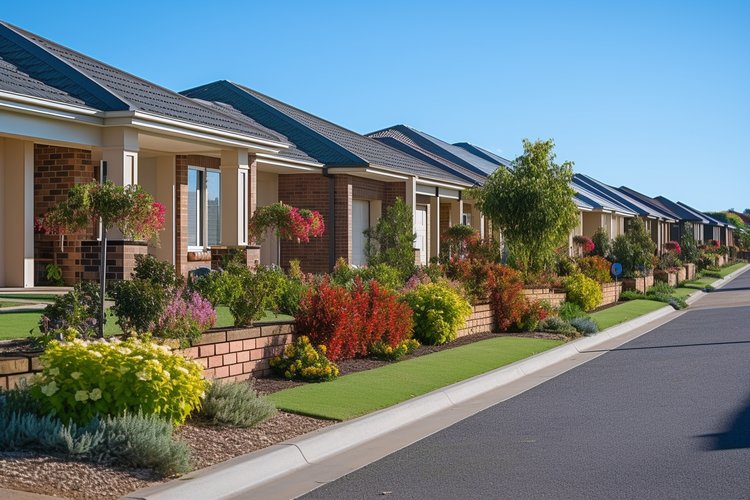Micro-Apartments: The Next Big Thing in Urban Real Estate
The real estate landscape is witnessing a fascinating shift as micro-apartments gain traction in major urban centers. These compact living spaces, typically ranging from 200 to 400 square feet, are redefining the concept of home in densely populated cities. As housing affordability becomes increasingly challenging in metropolitan areas, micro-apartments offer a unique solution that balances location, functionality, and cost-effectiveness.

Initially met with skepticism, micro-apartments have evolved significantly over the past decade. Developers and architects have refined designs to maximize space utilization, incorporating innovative storage solutions and multifunctional furniture. This evolution has transformed micro-apartments from mere alternatives to desirable living options for a growing segment of urban dwellers.
Current Market Trends and Financial Insights
The micro-apartment market is experiencing robust growth. According to recent market research, the global micro-apartment market is projected to grow at a CAGR of 7.2% from 2021 to 2026. This growth is driven by several factors, including urbanization, rising housing costs, and changing lifestyle preferences among millennials and Gen Z.
From an investment perspective, micro-apartments offer attractive returns. In major cities, these units often command higher per-square-foot rents compared to traditional apartments. For instance, in New York City, micro-apartments can yield 10-15% higher returns per square foot than conventional units. This premium is attributed to the desirable locations and the all-inclusive nature of many micro-apartment complexes.
The Appeal of Micro-Living: Who’s Buying and Why?
Micro-apartments cater to a diverse demographic, but they particularly resonate with young professionals, students, and urban minimalists. The appeal lies in the combination of affordability and prime location. For many, the trade-off of space for a central urban address is worthwhile, especially in cities where commute times can significantly impact quality of life.
Moreover, the minimalist lifestyle associated with micro-living aligns with growing environmental consciousness. Smaller living spaces inherently have a lower carbon footprint, appealing to environmentally conscious renters and buyers. This aspect is increasingly becoming a selling point for developers marketing micro-apartments to eco-aware millennials and Gen Z.
Design Innovations: Maximizing Minimal Space
The success of micro-apartments hinges on innovative design. Architects and interior designers are pushing the boundaries of space optimization. Foldable furniture, murphy beds, and modular storage solutions are standard features in modern micro-apartments. Some developments incorporate smart home technology, allowing residents to control lighting, temperature, and even furniture arrangements through smartphone apps.
One notable trend is the inclusion of shared amenities. Many micro-apartment complexes feature expansive common areas, including co-working spaces, gyms, and rooftop gardens. These shared spaces extend the living area beyond the apartment walls, fostering a sense of community among residents.
Regulatory Challenges and Urban Planning Implications
The rise of micro-apartments has not been without challenges. Zoning laws in many cities were not designed with these ultra-compact units in mind. Some municipalities have had to revise minimum square footage requirements and building codes to accommodate micro-apartment developments.
There’s also ongoing debate about the long-term impact of micro-apartments on urban planning and community development. Critics argue that an overabundance of micro-units could lead to transient communities and put pressure on local infrastructure. Proponents, however, see micro-apartments as a solution to urban density challenges and a way to revitalize underutilized areas.
The Future of Micro-Apartments: Expansion and Evolution
As the micro-apartment trend continues to grow, we’re likely to see further evolution in design and functionality. Some developers are exploring the concept of “micro-communities,” where clusters of micro-apartments are built around shared facilities and green spaces. This approach aims to address concerns about isolation and create more sustainable urban living models.
Technology is set to play an increasingly significant role in micro-apartment living. From AI-powered space optimization to virtual reality tours for remote buyers, the integration of cutting-edge tech is making micro-living more appealing and accessible.
Investment Opportunities and Market Outlook
For real estate investors, micro-apartments present an intriguing opportunity. The lower entry cost compared to traditional apartment investments, combined with potentially higher yields, makes them an attractive option for diversifying real estate portfolios. However, investors should be aware of the unique challenges, including higher tenant turnover rates and the potential for regulatory changes affecting micro-apartment developments.
Looking ahead, the micro-apartment market is expected to expand beyond major metropolitan areas. Second-tier cities experiencing urban revitalization are likely to see an increase in micro-apartment developments. This expansion could open up new investment opportunities in emerging urban markets.
In conclusion, micro-apartments represent a significant shift in urban real estate. As cities grapple with housing affordability and density challenges, these compact living spaces offer a viable solution. For investors, developers, and urban planners, understanding the micro-apartment trend is crucial in navigating the future of urban real estate. While challenges remain, the continued innovation in design and growing acceptance among younger generations suggest that micro-apartments will play an increasingly important role in shaping our urban landscapes.






